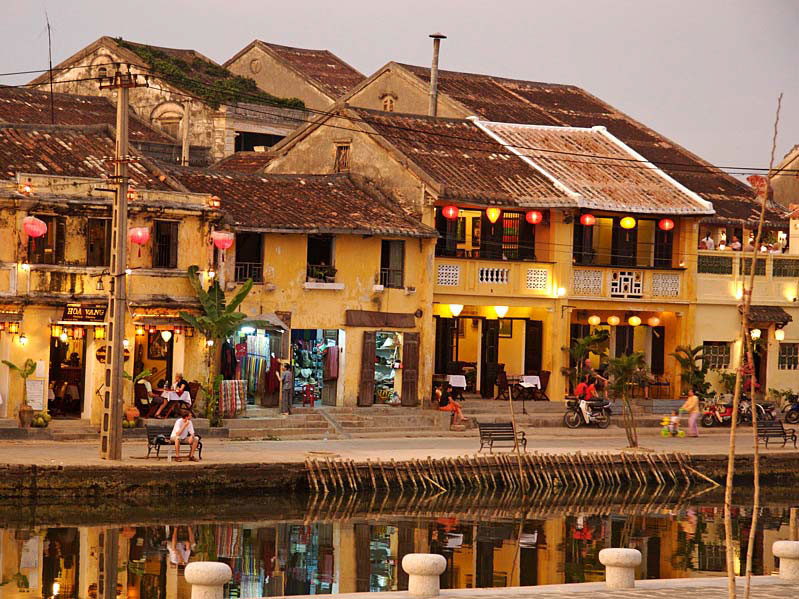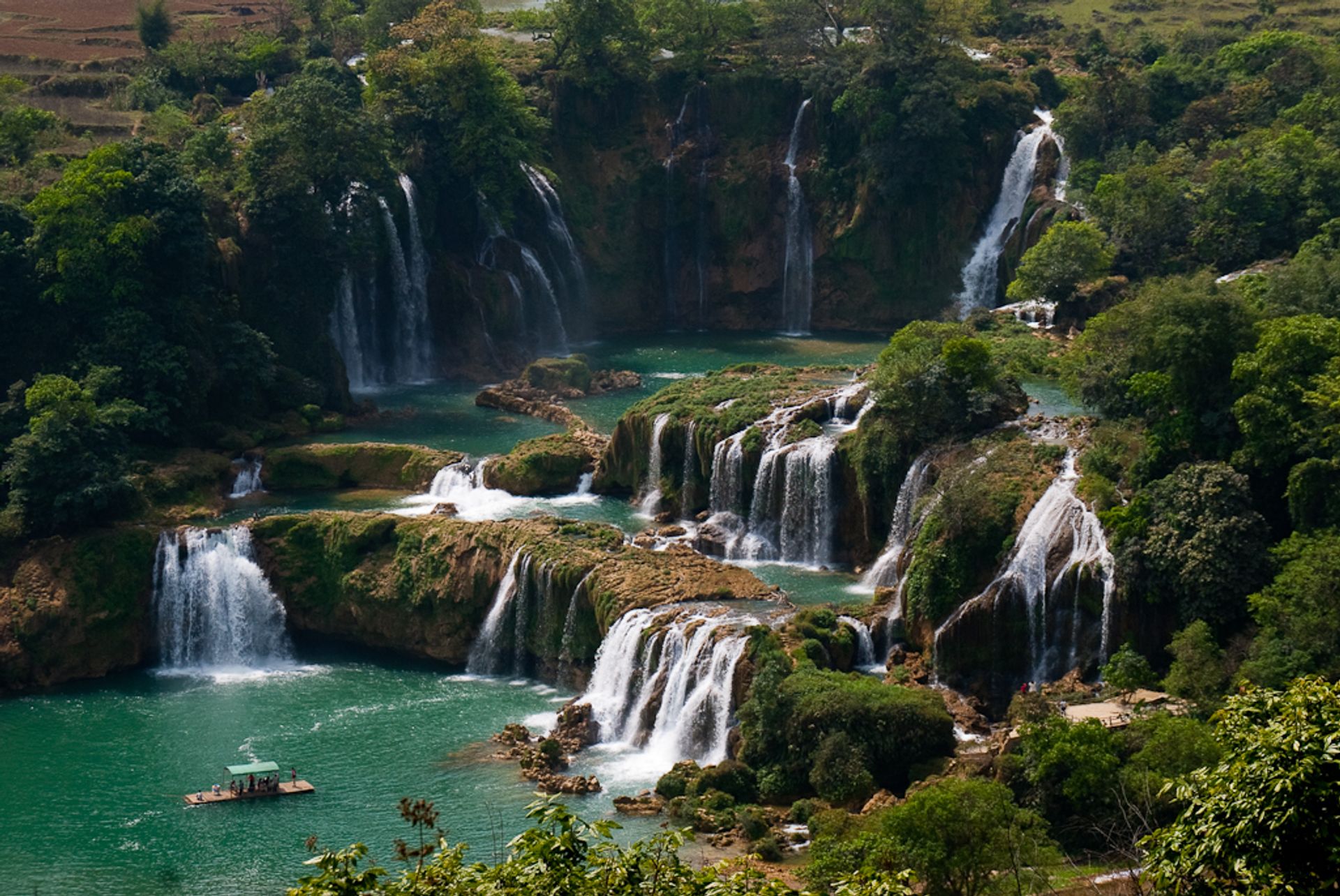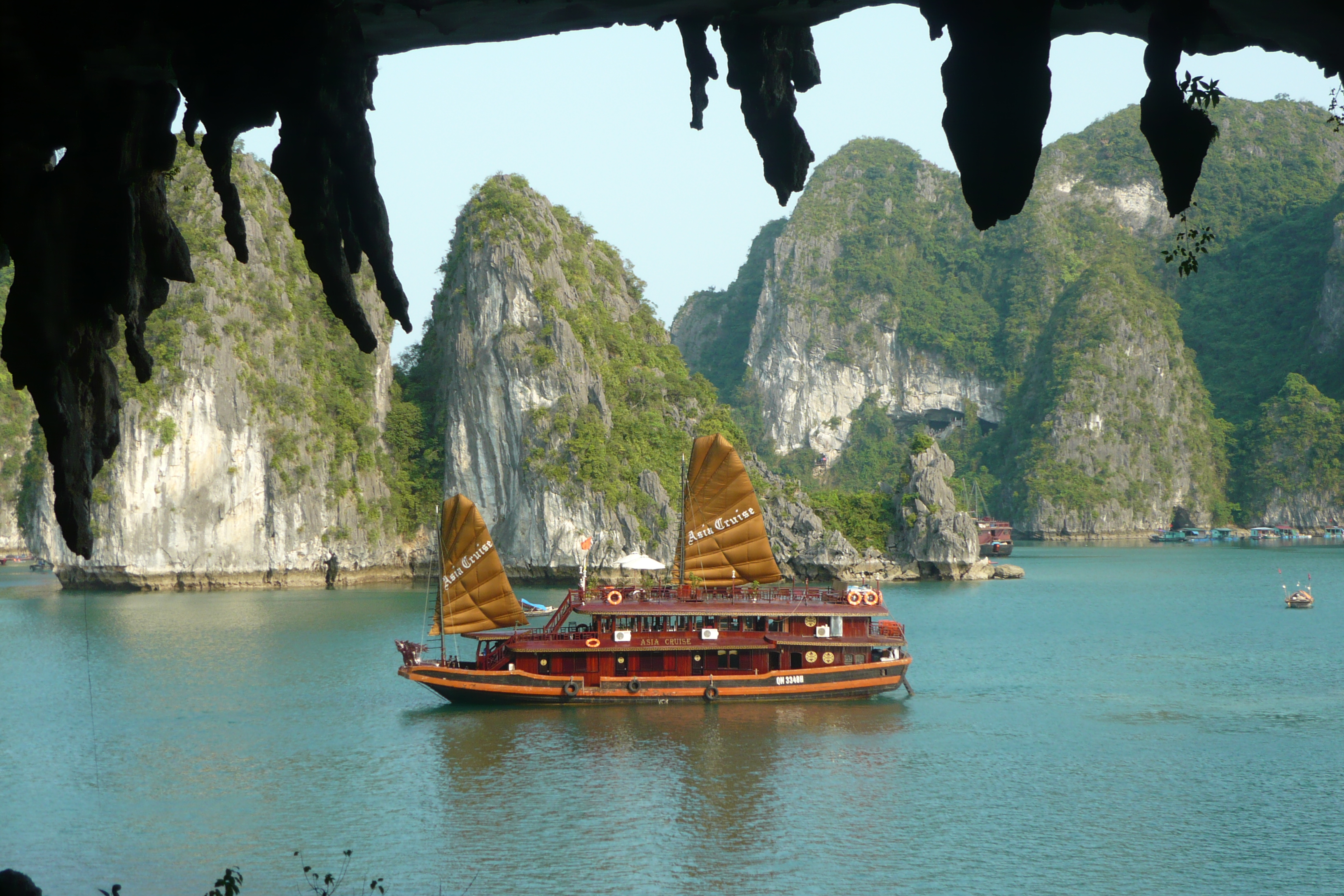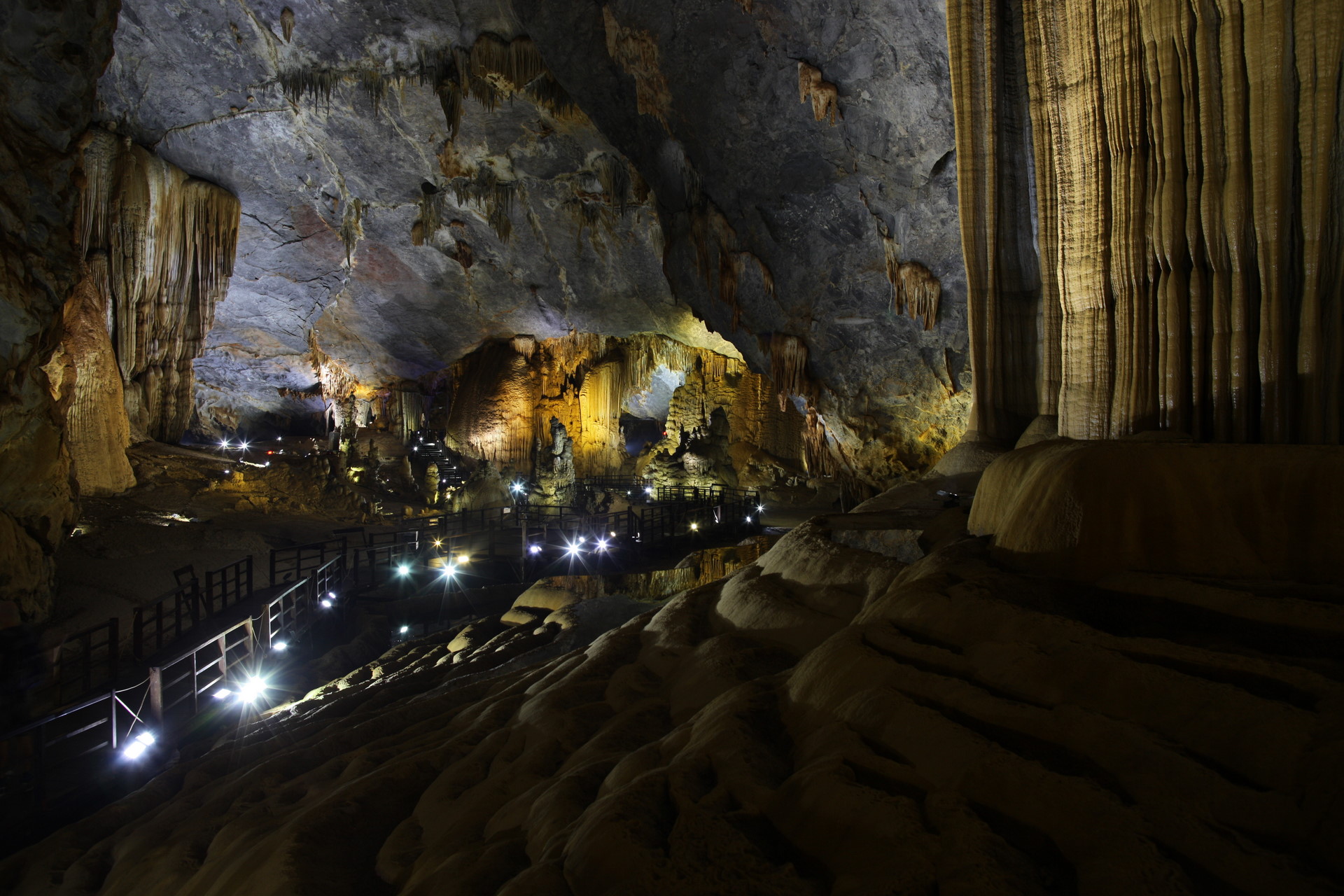Tourism In Vietnam on:
[Wikipedia]
[Google]
[Amazon]







 Tourism in Vietnam is a component of the modern Vietnamese economy. In 2019, Vietnam received 18 million international arrivals, up from 2.1 million in the year 2000. The Vietnam National Administration of Tourism is following a long-term plan to diversify the tourism industry, which brings foreign exchange into the country.Vietnam country profile
Tourism in Vietnam is a component of the modern Vietnamese economy. In 2019, Vietnam received 18 million international arrivals, up from 2.1 million in the year 2000. The Vietnam National Administration of Tourism is following a long-term plan to diversify the tourism industry, which brings foreign exchange into the country.Vietnam country profile
Library of Congress Federal Research Division (December 2005). ''This article incorporates text from this source, which is in the public domain.'' Tourist arrivals in Vietnam have continued to rise in recent years. In 2008, Vietnam received 4.218 million international tourists, in 2009 the number was 3.8 million, down 11%. In 2012, Vietnam received 6.84 million tourists. This was a 13% increase from 2011 figure of 6 million international visitors, which was itself a rise of 2 million visitors relative to 2010 arrivals. In 2016, Vietnam welcomed 10 million international visitors which represented a 26% increase from the previous year. In 2019, Vietnam with 18 million international visitors was fifth most visited country in the Asia-Pacific region as per World Tourism rankings released by the United Nations World Tourism Organization.
* Country in ASEAN

 Huế, Hội An, Mỹ Sơn ( Quảng Nam province), Hạ Long Bay ( Quảng Ninh province), Phong Nha-Kẻ Bàng National Park ( Quảng Bình province), Imperial Citadel of Thăng Long ( Hanoi) and Citadel of the Hồ Dynasty ( Thanh Hóa province). Hạ Long Bay is one of New Seven Natural Wonders of the world.
Huế, Hội An, Mỹ Sơn ( Quảng Nam province), Hạ Long Bay ( Quảng Ninh province), Phong Nha-Kẻ Bàng National Park ( Quảng Bình province), Imperial Citadel of Thăng Long ( Hanoi) and Citadel of the Hồ Dynasty ( Thanh Hóa province). Hạ Long Bay is one of New Seven Natural Wonders of the world.
 Throughout thousands of years, wars played a great role in shaping the identity and culture of people inhabited the land which is modern day Vietnam,
There are numerous historical sites from Ancient Vietnam to the First Indochina War and the Second Indochina War.
Most notable ancient sites include;
* Citadel of the Ho Dynasty
* Imperial City of Hue
* Mỹ Sơn
Most notable places from the First and Second Indochina War (Vietnam War) for tourists are;
* Củ Chi tunnels
* War Remnants Museum
* Vietnam Military History Museum
* Hoa Lo Prison
Throughout thousands of years, wars played a great role in shaping the identity and culture of people inhabited the land which is modern day Vietnam,
There are numerous historical sites from Ancient Vietnam to the First Indochina War and the Second Indochina War.
Most notable ancient sites include;
* Citadel of the Ho Dynasty
* Imperial City of Hue
* Mỹ Sơn
Most notable places from the First and Second Indochina War (Vietnam War) for tourists are;
* Củ Chi tunnels
* War Remnants Museum
* Vietnam Military History Museum
* Hoa Lo Prison





 Tourism in Vietnam is a component of the modern Vietnamese economy. In 2019, Vietnam received 18 million international arrivals, up from 2.1 million in the year 2000. The Vietnam National Administration of Tourism is following a long-term plan to diversify the tourism industry, which brings foreign exchange into the country.Vietnam country profile
Tourism in Vietnam is a component of the modern Vietnamese economy. In 2019, Vietnam received 18 million international arrivals, up from 2.1 million in the year 2000. The Vietnam National Administration of Tourism is following a long-term plan to diversify the tourism industry, which brings foreign exchange into the country.Vietnam country profileLibrary of Congress Federal Research Division (December 2005). ''This article incorporates text from this source, which is in the public domain.'' Tourist arrivals in Vietnam have continued to rise in recent years. In 2008, Vietnam received 4.218 million international tourists, in 2009 the number was 3.8 million, down 11%. In 2012, Vietnam received 6.84 million tourists. This was a 13% increase from 2011 figure of 6 million international visitors, which was itself a rise of 2 million visitors relative to 2010 arrivals. In 2016, Vietnam welcomed 10 million international visitors which represented a 26% increase from the previous year. In 2019, Vietnam with 18 million international visitors was fifth most visited country in the Asia-Pacific region as per World Tourism rankings released by the United Nations World Tourism Organization.
Tourism in the economy
Tourism is important in Vietnam. For backpackers, culture and nature lovers, beach-lovers, military soldiers and veterans, Vietnam has become a new tourist destination in Southeast Asia. Local and international tour operators offer tours to ethnic minority groups, walking and bicycle tours, photography tours, kayak trips and multi-country trips in particular with neighboring Cambodia,Laos
Laos (, ''Lāo'' )), officially the Lao People's Democratic Republic ( Lao: ສາທາລະນະລັດ ປະຊາທິປະໄຕ ປະຊາຊົນລາວ, French: République démocratique populaire lao), is a socialist ...
and Thailand. Foreign tourists have been able to travel freely in the country since 1997.
The economy of Vietnam
The economy of Vietnam is a mixed socialist-oriented market economy, which is the 38th-largest in the world as measured by nominal gross domestic product (GDP) and 26th-largest in the world as measured by purchasing power parity (PPP) in 2022. ...
has transformed from an agrarian to a service economy. More than a third of gross domestic product is generated by services, which include the hotel and catering industry and transportation. The manufacturing and construction (28 percent), agriculture and fisheries (20 percent) and mining (10 percent) have much smaller shares.
Tourism contributes 4.5 percent to gross domestic product (as of 2007). After heavy industry and urban development, most foreign investment in Vietnam has been concentrated in tourism, especially in hotel projects.
According to usual report of World Tourism and Travel Council, tourism contributed 6.6 percent to GDP equal VND 279,287 billion (03/2016) which has important contribution promoting development of related sectors such as transportation, entertainment, cuisine etc.
Tourism statistics
International visitors
Data source: Ministry of Culture, Sport & TourismTop 29 International Visitors in Vietnam
Data Source: Ministry of Culture, Sport & TourismDestinations and attractions

National parks of Vietnam
Vietnam has 31 national parks: Ba Bể, Ba Vì, Bạch Mã, Bái Tử Long, Bến En, Bidoup Núi Bà, Bù Gia Mập, Cát Bà, Cát Tiên, Chư Mom Ray, Chư Yang Sin,Côn Đảo
The Côn Đảo ("Côn Island") are an archipelago of Bà Rịa–Vũng Tàu province, in the Southeast region of Vietnam, and also a district () of this province.
Geography
Situated about from Vũng Tàu and from Ho Chi Minh City, the group ...
, Cúc Phương, Hoàng Liên, Kon Ka Kinh, Lò Gò-Xa Mát, Cape Cà Mau
Cape Cà Mau (''Mũi Cà Mau'') on Cà Mau Peninsula in Vietnam, is the southernmost point of the Vietnamese mainland.
Gallery
File:Tuongdaimuicamau.jpg, The ship-shaped monument marks the geographical location of Cape Ca Mau
File:Mui Ca Mau 0 ...
, Núi Chúa, Phong Nha-Kẻ Bàng Phong may refer to:
Computer graphics
* Phong shading
* Phong reflection model
* Blinn–Phong shading model
* Bui Tuong Phong - creator of the Phong shading interpolation method and reflection model.
Other
* Phong-Kniang language
* Nam Phon ...
, Phú Quốc, Phước Bình, Pù Mát, Tam Đảo
TAM may refer to:
Biology
* Thioacetamide, an organosulfur compound
* Tumor-associated macrophage, a class of immune cells
* Transparent Anatomical Manikin, an educational model
Technology
* Tanque Argentino Mediano, the main battle tank of A ...
, Tràm Chim, U Minh Hạ, U Minh Thượng, Vũ Quang, Xuân Sơn, Xuân Thủy
Xuân Thủy (September 2, 1912 – June 20, 1985) was a Vietnamese political figure. He was the Foreign Minister of North Vietnam from 1963 to 1965 and then chief negotiator of the North Vietnamese at the Paris Peace talks.
Thủy was bor ...
, Yok Đôn.
World Heritage sites
Man and the Biosphere Programme
Vietnam has eight zones that are world biosphere reserves: Red River Delta (Ninh Bình
Ninh Bình () is a small city in the Red River Delta of northern Vietnam. It is the capital of Ninh Bình Province.
Geography
Ninh Bình Province is located in northern Vietnam comprising 48 square kilometres; the 2007 city population was 130,517 ...
, Nam Định, Thái Bình), Cát Bà National Park ( Hai Phong), western Nghệ An, Cu Lao Cham Marine Park, Cape Cà Mau National Park ( Cà Mau), Cát Tiên National Park ( Đồng Nai) and Cần Giờ (Ho Chi Minh City
, population_density_km2 = 4,292
, population_density_metro_km2 = 697.2
, population_demonym = Saigonese
, blank_name = GRP (Nominal)
, blank_info = 2019
, blank1_name = – Total
, blank1_ ...
).
National tourist area
Vietnam now has 21 national tourist areas, major tourist sites that are state recognized:Sa Pa
Sa Pa (, also written as Sapa) is a district-level town of Lào Cai Province in the Northwest region of Vietnam. As of 2018, the town had a population of 61,498. The town covers an area of 677 km2. The town capital lies at Sa Pa. It is one ...
( Lào Cai), Ba Bể ( Bắc Kạn), Hạ Long Bay – Cát Bà Island ( Quảng Ninh, Hai Phong), Ba Vì National Park ( Hanoi), Perfume Pagoda ( Hanoi), Cổ Loa Citadel ( Hanoi), Tam Cốc-Bích Động
TAM may refer to:
Biology
* Thioacetamide, an organosulfur compound
* Tumor-associated macrophage, a class of immune cells
* Transparent Anatomical Manikin, an educational model
Technology
* Tanque Argentino Mediano, the main battle tank of Arge ...
(Ninh Bình
Ninh Bình () is a small city in the Red River Delta of northern Vietnam. It is the capital of Ninh Bình Province.
Geography
Ninh Bình Province is located in northern Vietnam comprising 48 square kilometres; the 2007 city population was 130,517 ...
), Kim Liên ( Nghệ An), Phong Nha-Kẻ Bàng National Park ( Quảng Bình), Ho Chi Minh trail ( Quảng Trị), Lăng Cô – Hải Vân Pass
The Hải Vân Pass ( vi, Đèo Hải Vân, , "ocean cloud pass"), is an approximately 21 km long mountain pass on National Route 1 (Vietnam), National Route 1 in Vietnam. It traverses a spur of the larger Annamite Range that juts into the Eas ...
– Non Nuoc ( Thừa Thiên–Huế and Da Nang
Nang or DanangSee also Danang Dragons ( ; vi, Đà Nẵng, ) is a class-1 municipality and the fifth-largest city in Vietnam by municipal population. It lies on the coast of the East Sea of Vietnam at the mouth of the Hàn River, and is one ...
), Hội An ( Quảng Nam), Van Phong Bay
A van is a type of road vehicle used for transporting goods or people. Depending on the type of van, it can be bigger or smaller than a pickup truck and SUV, and bigger than a common car. There is some varying in the scope of the word across th ...
( Khánh Hòa), Phan Thiết – Mũi Né
Mũi Né is a coastal fishing town in the south-central Bình Thuan Province of Vietnam. The town, with approximately 25,000 residents, is a ward of the city of Phan Thiết. Mui Ne and the other wards of Phan Thiet stretch along the coast for ...
( Bình Thuận), Dankia – Yellow Springs, Tuyền Lâm Lake (Lâm Đồng Lâm is a Vietnamese surname. The name is transliterated as Lin in Chinese and Im in Korean.
Lam is the anglicized variation of the surname Lâm.
Lam is also a commonly held surname of Cantonese speakers of Chinese descent. Large populations in ...
), Cần Giờ Mangrove Forest (Ho Chi Minh City
, population_density_km2 = 4,292
, population_density_metro_km2 = 697.2
, population_demonym = Saigonese
, blank_name = GRP (Nominal)
, blank_info = 2019
, blank1_name = – Total
, blank1_ ...
), Côn Đảo
The Côn Đảo ("Côn Island") are an archipelago of Bà Rịa–Vũng Tàu province, in the Southeast region of Vietnam, and also a district () of this province.
Geography
Situated about from Vũng Tàu and from Ho Chi Minh City, the group ...
( Bà Rịa–Vũng Tàu), Long Hai beach ( Bà Rịa–Vũng Tàu), Phú Quốc ( Kiên Giang), Biosphere Reserve Cape Cà Mau ( Cà Mau).
Cities
Since 2014, Hanoi has consistently been voted in the world's top ten destinations by TripAdvisor. It ranked 8th in 2014, 4th in 2015 and 8th in 2016. In 2014, Hanoi, Hoi An andHo Chi Minh City
, population_density_km2 = 4,292
, population_density_metro_km2 = 697.2
, population_demonym = Saigonese
, blank_name = GRP (Nominal)
, blank_info = 2019
, blank1_name = – Total
, blank1_ ...
appeared in TripAdvisor's 2014 Traveler's Choice Awards for the top 25 destinations in Asia. Hanoi was ranked second, Hoi An tenth and Ho Chi Minh City
, population_density_km2 = 4,292
, population_density_metro_km2 = 697.2
, population_demonym = Saigonese
, blank_name = GRP (Nominal)
, blank_info = 2019
, blank1_name = – Total
, blank1_ ...
eighteenth. In 2017, Đà Lạt is in the list of Asia's overlooked places by the CNN.
International tourist arrivals
International airports
Air travel is the most popular form of travel for international arrivals to Vietnam; in 2013, nearly 6 million of the 7.6 million total international arrivals were by air. Tan Son Nhat International Airport, which serves Ho Chi Minh City, is the busiest airport with the largest visitor volume. On the other hand, Noi Bai International Airport, serving Hanoi, is the largest airport in terms of land area and total capacity after its opening of the modern international terminal. Other major airports include Da Nang International Airport, Cam Ranh International Airport and Cat Bi International Airport. In March 2020 admist the COVID-19 pandemic, Vietnam has suspended issuance of all tourist visa; however, as of September 2020, the country is still closed for foreign tourists until 2022, with plans to reopen for tourism from a limited number of Asian countries.Military tourism
 Throughout thousands of years, wars played a great role in shaping the identity and culture of people inhabited the land which is modern day Vietnam,
There are numerous historical sites from Ancient Vietnam to the First Indochina War and the Second Indochina War.
Most notable ancient sites include;
* Citadel of the Ho Dynasty
* Imperial City of Hue
* Mỹ Sơn
Most notable places from the First and Second Indochina War (Vietnam War) for tourists are;
* Củ Chi tunnels
* War Remnants Museum
* Vietnam Military History Museum
* Hoa Lo Prison
Throughout thousands of years, wars played a great role in shaping the identity and culture of people inhabited the land which is modern day Vietnam,
There are numerous historical sites from Ancient Vietnam to the First Indochina War and the Second Indochina War.
Most notable ancient sites include;
* Citadel of the Ho Dynasty
* Imperial City of Hue
* Mỹ Sơn
Most notable places from the First and Second Indochina War (Vietnam War) for tourists are;
* Củ Chi tunnels
* War Remnants Museum
* Vietnam Military History Museum
* Hoa Lo Prison
Volunteer tour programs
Various tour groups, including Saigon Hotpot, Dana Dragon Free, and Hanoi Kids, offer free travel guides for foreign travelers.Concerns
While Vietnam is largely a safe country to travel, scams remain as a problem in the country. Vietnamese tourist industry, despite its successful expansion, has been marred with the issue of fake taxis, money switch, thieving. These concerns have hindered the opportunity to further boost Vietnam's tourism.Externalities tourism in Vietnam
Travelling and tourism around the world have increased, mainly thanks to growling interest from China's middle hierarchy. Southeast Asia is an attractive tourist destination in recent years, which bolstered economic opportunities for countries located there. Vietnam benefited greatly from such a trend. The tourism demand right before the COVID pandemic was projected to grow yearly roughly by 4 per cent (2019-2029). While the outlook will most likely not reach this target, we can expect a very volatile outcome that will most likely not be able to meet the estimated growth. Even then, in the year 2018, the Southeast Asia tourist destination had over 130 million international visitors. (9.3 per cent of total global international visitor flows), and the region's share of the worldwide market is expected to expand further to 10.4 per cent by 2030 (or 187 million visitors). At the same time, nobody can predict how the Chinese outbound travellers confidence in travelling will be affected. Before the pandemic, the Chinese outbound travellers had a growth of 21.7% annually between 2012 and 2017. Vietnam is a very popular tourist destination thanks to its diverse nature and culture. According to the World Economic forum's (WEF), Vietnam ranked 32nd globally in one of 120 countries with reference to its natural and folk sources and followed Indonesia and Thailand is among the Southeast Asia region in the latest 2017 Tourism Competitiveness Index. Vietnam can offer tourists a broad range of activities, starting from eight UNESCO World Heritage sites, various beautiful oceans and beaches. There are cities such as Ha Noi, Ho Chi Minh and Da Nang that can offer fulfilling nightlife, shopping malls, and rich and diverse street food cuisine for urban lovers. In addition, the Government of Vietnam is prioritizing tourism as a critical target to drive socio-economic development. The aim is to make Vietnam a top destination in Southeast Asia. To achieve the goal, the government is now preparing an innovative tourism strategy for the period 2018 to 2030 to spur the development of the tourism industry in the next decade. Many countries in Southeast Asia, including Vietnam, focus on tourism development on their economic development plan. Vietnam had acquired a surge in domestic and international tourism in over ten years, thanks to its strategy of focusing on market segments where it has a competitive advantage. Specifically, the number of multinational tourists to Vietnam had approximately quadrupled from 4.2 million in 2008 to 15.5 million in 2018. International arrivals increase to 25% from an average of around 9% per year, so travel transport industries such as airline and road also significantly increased. With domestic tourists, strong growth is what the government captures the growing demand for tourism in the region. For foreign tourists, the growth is more prominent than other rival countries in Southeast Asia, with the exception of Myanmar. As a result, Vietnam has been and is a bright spot on the world's tourist map, which is comparable to famous tourist countries in Asia such as Thailand, China, and Japan. Despite these benefits, the tourism industry in Vietnam still has critical weaknesses in its relatively competitive aspect. The government's allocation of spending to the tourism sector is relatively low at 1.4% of total government spending in 2017. Although the tourism industry is strategically important, the vision for change in the tourism industry has not changed significantly. Indiscriminate disposal of waste, protection of marine life, forest animals, and environmental pollution are the issues that seriously affect this smokeless industry. Another major hurdle associated with foreign tourists is the visa regime. The government is still not open to the problem of visas as only 24 countries in the world are exempt from permits, which reduces the attraction of people to Vietnam However, the COVID-19 pandemic strongly affected Vietnam's tourism as all international commercial flights were banned from landing at all international airports in Vietnam. International tourists, the primary source of revenue for the tourism industry, have declined dramatically in the past year. The number of flights in October 2020 decreased by 80% compared to the same period last year. Hotel room capacity is only 30%. The inability of foreign tourists to come to Vietnam has a massive impact on the revenue of the tourism industry and the economy, as this group spends much more heavily than domestic tourists. In 2019, the tourism industry accounts for 12% of the country's GDP, international visitors only 17% but more than half: on average, each foreign tourist spends US$673, while domestic tourists only spend US$61. The tourism industry created 660 thousand jobs in the period 2014–2019. and the drop in tourist spending also brought the food, beverage and retail industries into a dire situation. The government giving to the good control of the COVID-19 epidemic with the policy of "0 cases in the community" and also the lowest COVID-19 mortality rate in the country. Domestic stimulus programs not only target Vietnamese but also foreigners living permanently in the country. Vietnam has attracted responses from travel companies, tourism businesses and from localities across the country. Tourism products aimed at human health, sports tourism, medical treatment, ecology, yoga, and nature-friendly tourism are becoming more and more attractive, so domestic tourists are getting more and more attractive. Now there are many options and at ease to travel.See also
*Visa policy of Vietnam
Visitors to Vietnam must obtain a visa from one of the Vietnamese diplomatic missions unless they come from one of the visa exempt countries or countries eligible for electronic visas. However, owing to the COVID-19 pandemic in Vietnam, the issu ...
* List of museums in Vietnam
References
External links
* {{DEFAULTSORT:Tourism In Vietnam Vietnam